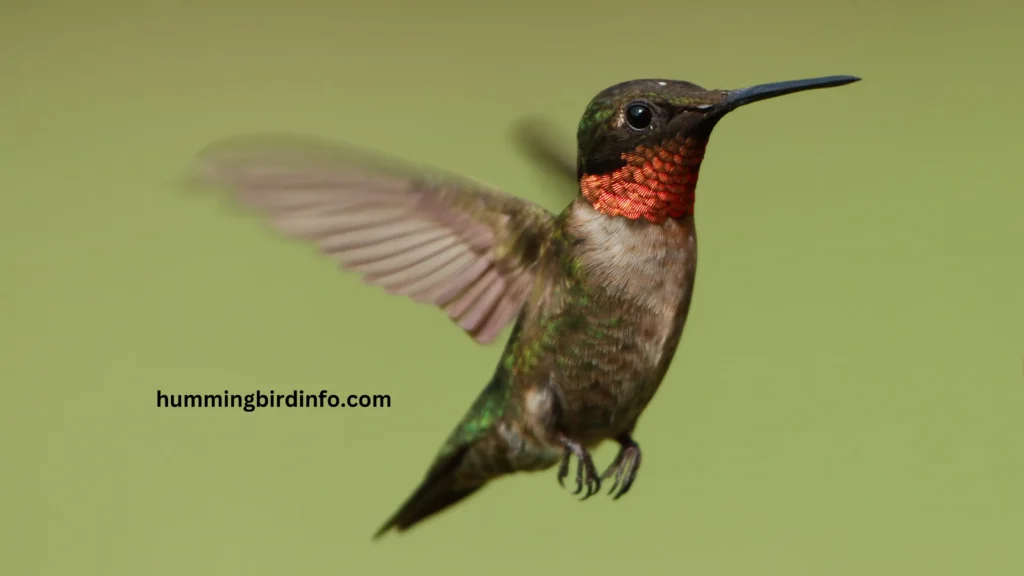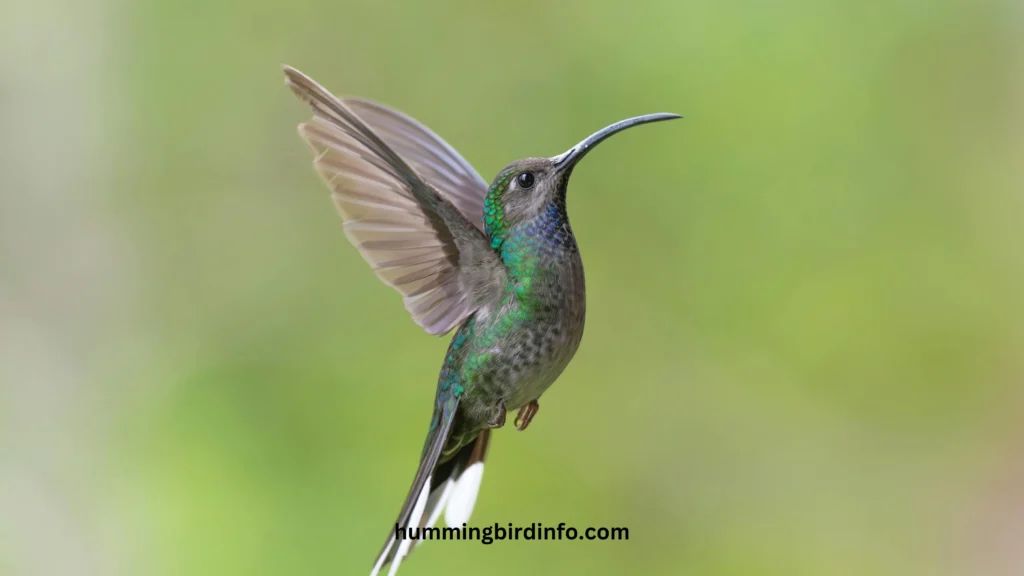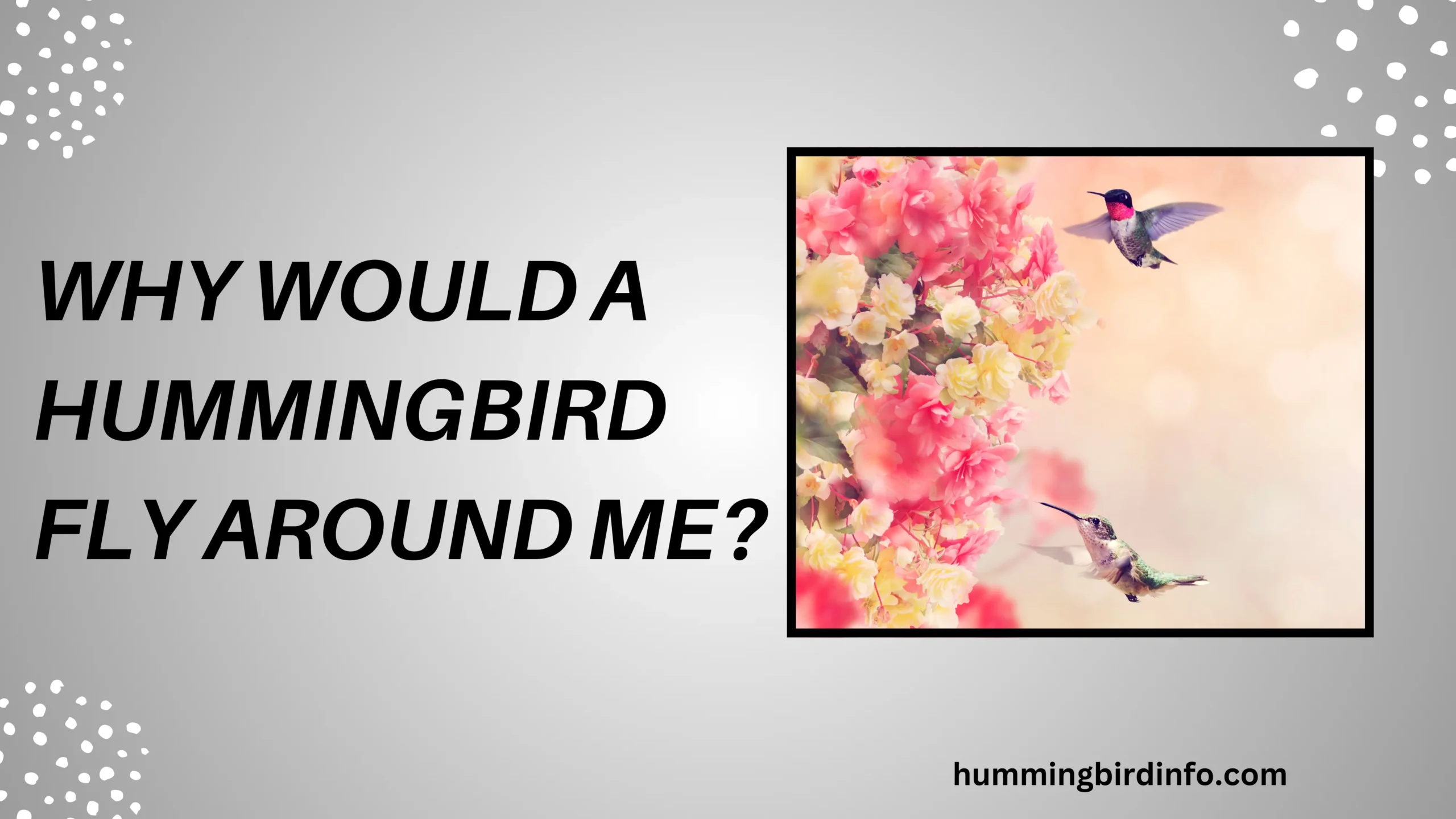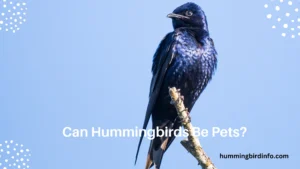A hummingbird zipping around you feels like a scene from a fairy tale. Their tiny, vibrant bodies and incredible wing speed make them seem almost unreal.
But when one starts hovering and circling you, it can leave you wondering—what could possibly be going through that little bird’s mind?
Hummingbirds are known for their fast movements and laser focus on flowers and feeders. They usually have a very clear purpose: finding food or defending territory. So, when their attention is fixed on a human, it’s not only unusual—it’s a fascinating window into their sharp instincts and surprising intelligence.
So, why would a hummingbird fly around you? Could it be confused, curious, territorial, or even hoping you have a snack? In this article, we’ll explore the real reasons behind this enchanting behavior—and how you can respond in a way that respects and supports these incredible creatures.
Contents
- 1 Mistaken Identity: The Lure of Color and Shine
- 2 Curiosity and Exploration
- 3 Learned Associations with Feeding
- 4 Territorial Displays and Defense
- 5 Seeking Assistance (Rare but Possible)
- 6 Conclusion
- 7 FAQs
- 7.1 1. Why are hummingbirds attracted to red?
- 7.2 2. What does it mean when a hummingbird hovers around my head?
- 7.3 3. Can hummingbirds recognize individual humans?
- 7.4 4. Is it safe to hand-feed hummingbirds?
- 7.5 5. Are territorial hummingbirds aggressive toward humans?
- 7.6 6. Do shiny objects confuse hummingbirds?
Mistaken Identity: The Lure of Color and Shine
Bright colors, especially red, act like a magnet for hummingbirds searching for nectar. If you’re wearing red clothing, hats, or accessories, a hummingbird might easily mistake you for a giant flower. Even shades of orange, pink, and bright purple can catch their attention the same way.

Shiny objects like jewelry, sunglasses, or reflective watches can reflect light in ways that hummingbirds associate with dew-covered petals. They may zip around you, investigating if you’re hiding a tasty treat. Their sharp vision picks up these visual cues from incredible distances.
Learned associations are powerful for hummingbirds. If you often refill feeders while wearing certain colors, local birds might learn to associate you personally with food. In these cases, their interest is not random—it’s a hopeful expectation!
Curiosity and Exploration
Hummingbirds are incredibly smart creatures with excellent memory and observational skills. They notice changes in their environment instantly and may fly around a person simply out of genuine curiosity. Your slow movements, bright attire, or presence in a familiar feeding area can intrigue them.
When something new appears in their territory, hummingbirds want to understand whether it’s a threat, a food source, or just part of the scenery. If you’re moving calmly or standing still, they might come closer for a better look without any fear.
Young hummingbirds especially are more curious and brave. Still learning the rules of their tiny world, they are more likely to approach humans, mistaking them for part of their natural surroundings.
Learned Associations with Feeding
Over time, hummingbirds can recognize and trust people who reliably offer food. If you refill a feeder daily or offer hand-held feeding stations, they may start viewing you as a provider of sweet rewards. Flying around you could mean they’re asking, “Where’s my treat?”
Their anticipation becomes stronger when they hear familiar sounds, like the click of a feeder lid or even your voice. Some avid hummingbird fans even train them to feed from syringes or tiny cups, strengthening the bird-human bond.
With their strong memory, a hummingbird can remember safe feeding spots for years. If you move around your yard, they may follow you from tree to tree, waiting for you to set out their favorite snacks.
Territorial Displays and Defense
Sometimes, a hummingbird buzzing around you isn’t being friendly—it’s being territorial. These tiny birds are fiercely protective over food sources like feeders, flowers, or even nesting sites. If they see you as an intruder, they might dart and dive near you aggressively.
Signs of territorial defense include rapid, deliberate swoops, loud chipping sounds, and direct flights toward your head or chest. They’re not trying to attack but send a strong “Back off!” message to what they think is competition.
Territorial flights are usually more intense and purposeful than curious investigations. Recognizing the difference helps you decide whether to quietly move away to avoid stressing the bird.
Seeking Assistance (Rare but Possible)
Though rare, a hummingbird might seek human help if it’s confused, injured, or trapped. Their frantic movements, drooping wings, or erratic flying around you could signal distress rather than simple curiosity or territorial behavior.
Hummingbirds in trouble might see a human as the largest nearby “object” and act desperately, even though they don’t understand human rescue. It’s important to observe carefully before stepping in.
If you spot any obvious signs of injury or weakness, you should contact a local wildlife rehabilitator. Quick, expert action can make the difference between life and death for a struggling hummingbird.

Conclusion
Having a hummingbird fly around you is an unforgettable experience, whether it’s mistaking your bright shirt for a flower, checking you out with pure curiosity, or asking for the food it knows you bring. Each encounter is a glimpse into their tiny but intelligent world.
We’ve explored how hummingbirds might act based on mistaken identity, curiosity, feeding expectations, territorial defense, or even distress. Every flight pattern and behavior holds a small story about these fascinating creatures’ survival instincts.
The next time a hummingbird buzzes around you, pause and appreciate this rare moment of connection. By observing carefully and treating them with respect, you help protect the wonder of their presence for generations to come.
FAQs
1. Why are hummingbirds attracted to red?
Hummingbirds see red as a signal for rich nectar sources, making them naturally drawn to anything in that color range.
2. What does it mean when a hummingbird hovers around my head?
It could mean curiosity, territorial defense, or confusion about bright colors or shiny accessories you’re wearing.
3. Can hummingbirds recognize individual humans?
Yes, hummingbirds have excellent memories and can associate specific people with food and safety over time.
4. Is it safe to hand-feed hummingbirds?
Hand-feeding is safe if done with proper, hygienic equipment and without forcing interaction—always let the bird approach willingly.
5. Are territorial hummingbirds aggressive toward humans?
They’re not truly aggressive toward humans but may display warning behaviors like close flying and loud chipping sounds.
6. Do shiny objects confuse hummingbirds?
Yes, glinting jewelry, sunglasses, or watches can reflect light in a way that attracts or confuses hummingbirds momentarily.








